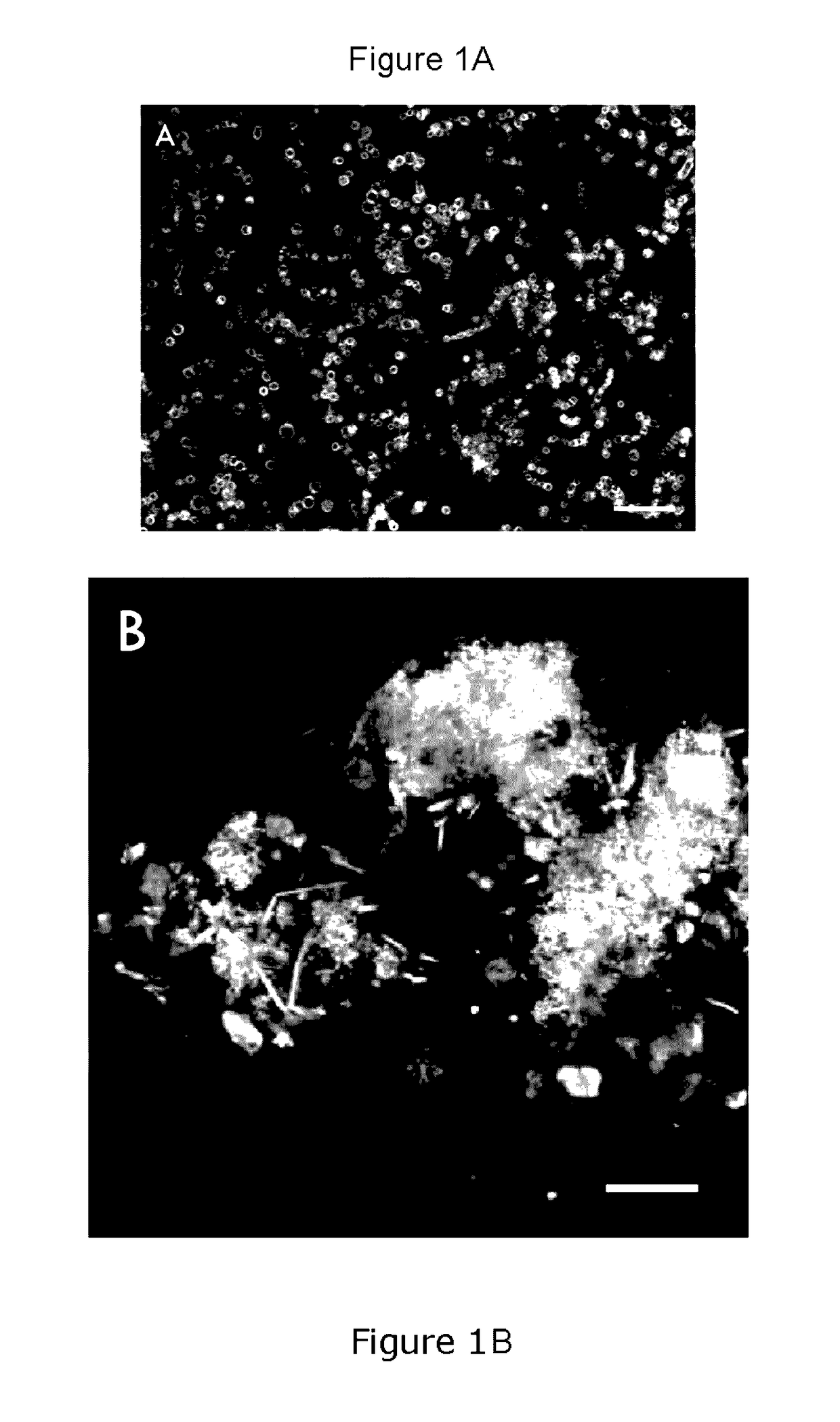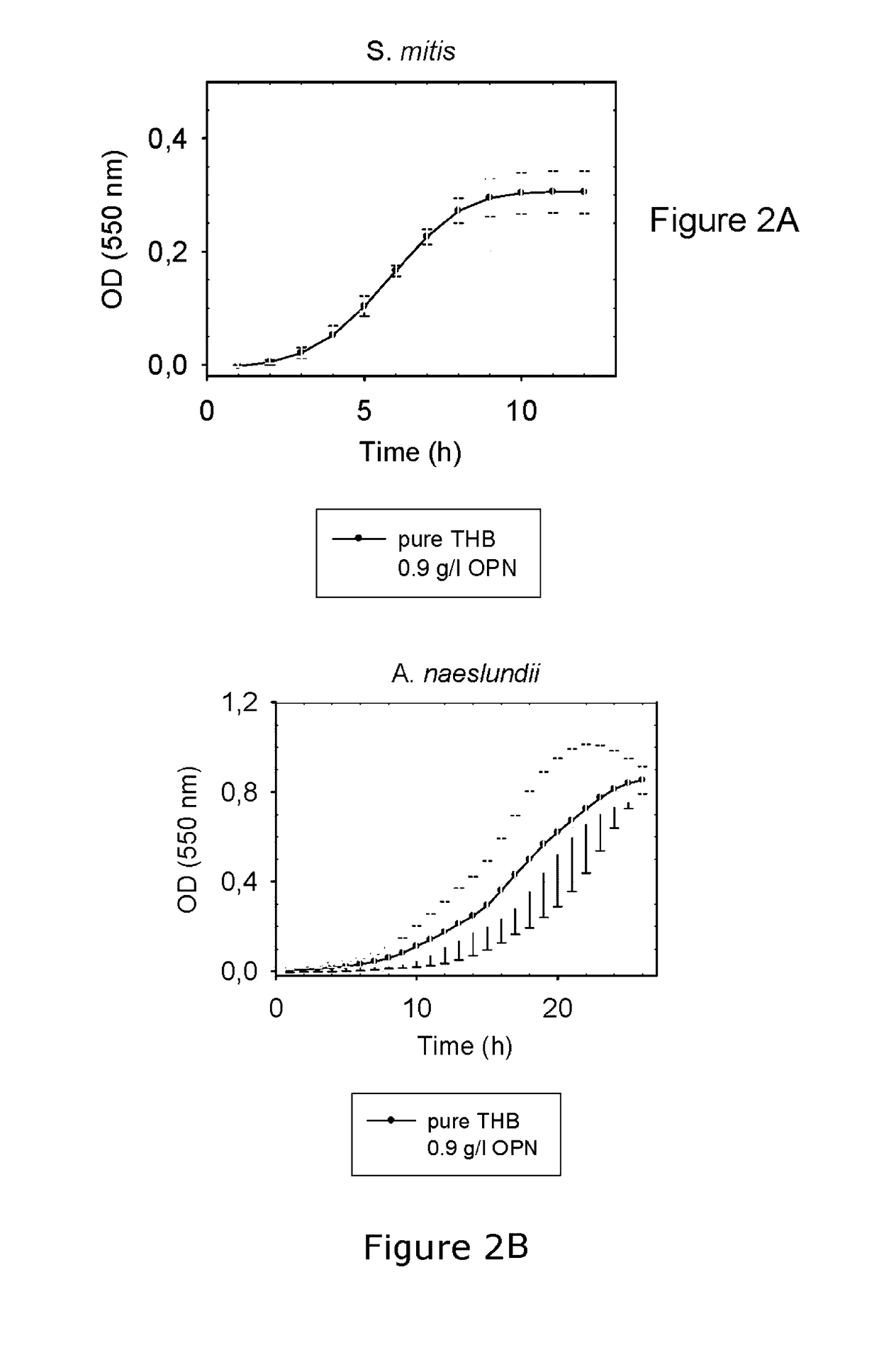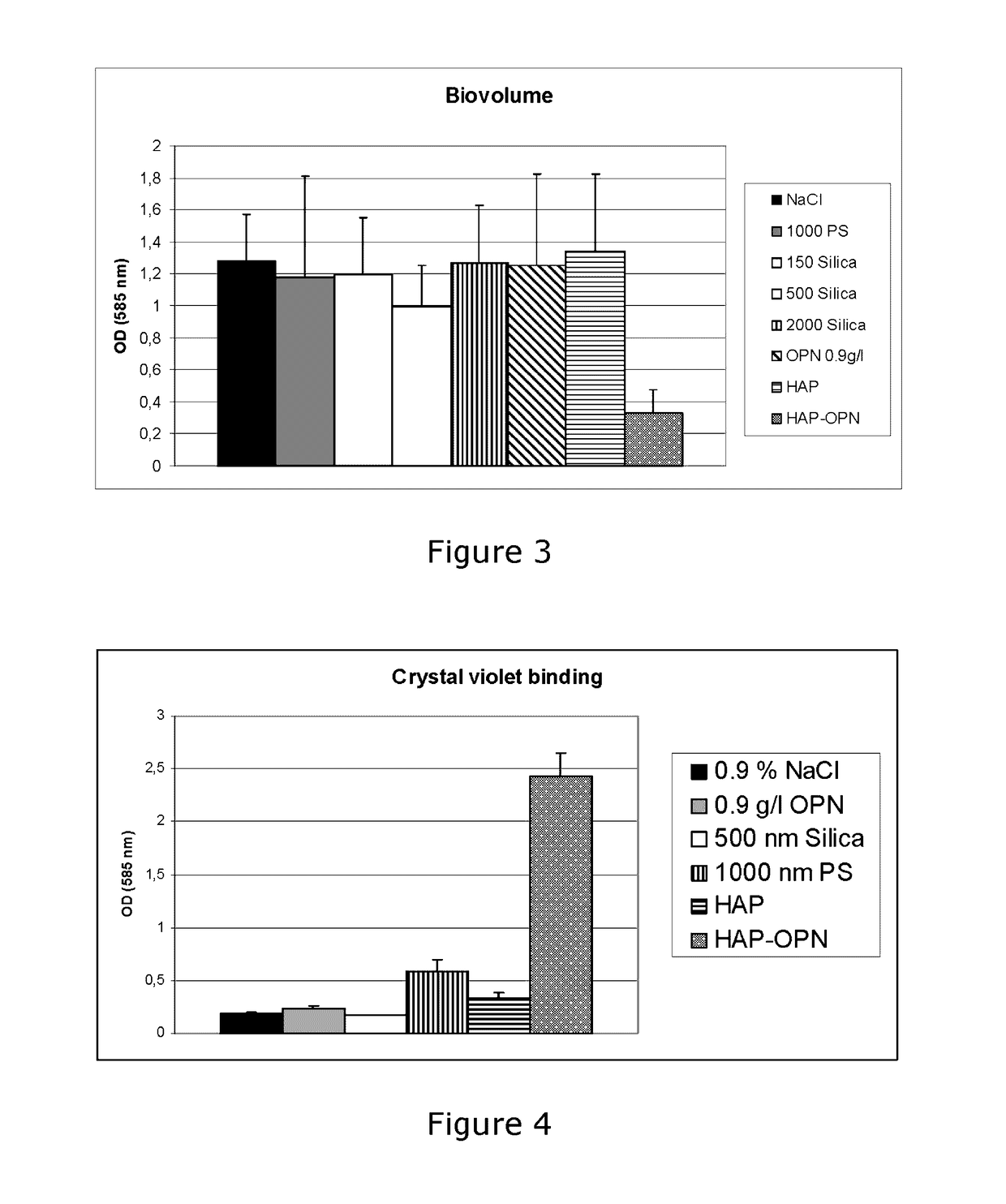Nanoparticle aggregates containing osteopontin and calcium- and/or strontium-containing particles
a technology of nanoparticles and aggregates, which is applied in the direction of antibacterial agents, drug compositions, peptide/protein ingredients, etc., can solve the problems of large economic losses worldwide, the harmful effects of microbial biofilms remain a major global problem, and the damage caused by microbial biofilms is larg
- Summary
- Abstract
- Description
- Claims
- Application Information
AI Technical Summary
Benefits of technology
Problems solved by technology
Method used
Image
Examples
example 1
Synthesis of Nanoparticle Aggregates
[0243]For synthesis of nanoparticle aggregates, the following method was used[0244]1) Three aqueous solutions were prepared in equal volumes, one containing 0.36 M Na3PO4 (conveniently made by making a solution that was 0.36 M NaH2PO4 and 0.72 M NaOH), the second containing 0.6 M CaCl2 and the third containing three times the desired final amount of OPN.[0245]2) The CaCl2 and OPN solutions were mixed first, and then the Na3PO4 solution was added. This mixing produced a turbid gel-like suspension. The gel-like structure broke down under stirring on a magnet stirrer. The solution was stirred for 24 h at 25° C. using a custom designed temperature controlled water bath.[0246]3) After 24 h, the solution was transferred to dialysis bags to remove excess NaCl. The dialysis was carried out for 24 h in a reservoir containing 100 times the solution volume of water that was slowly stirred by a magnetic stirrer. The reservoir water was changed after 12 h of d...
example 2
Growth of Dental Caries Model Biofilms
[0255]The human oral bacterial isolates Streptococcus oralis SK248, Streptococcus downei HG594, Streptococcus mitis SK24, Streptococcus sanguinis SK150 and Actinomyces naeslundii AK6 were used in the experiments. Organisms were cultivated aerobically on blood agar (SSI, Copenhagen, Denmark) and transferred to THB (Roth, Karlsruhe, Germany) at 35° C. until mid to late exponential phase prior to experimental use.
[0256]Flow cells (ibiTreat, μ-slide VI, Ibidi, Munich, Germany) were preconditioned with 1 / 10 THB (pH 7.0). Bacterial cultures, adjusted to an optical density of 0.4 at 550 nm (corresponding to 2-5*109 cells / ml), were inoculated sequentially into the flow channels in the following order: 1. S. oralis SK248; 2. A. naeslundii AK6; 3. S. mitis SK24; 4. S. downei HG594; 5. S. sanguinis SK150. 0.4 ml of each organism was injected through the silicone tubing at the in-port using sterile needles (BD Microlance, 27G, Drogheda, Ireland), and inject...
example 3
Binding of OPN to Bacteria in Caries Model Biofilms
[0257]OPN was labelled with fluorescein according to the manufacturer's instructions (Invitrogen, Taastrup, Denmark). After growth phase, biofilms were incubated for 45 min with 100 μl of the labelled protein at 35° C. and imaged using the 488 nm laser line and a 500-550 nm band pass filter. XY resolution was set to 0.1 μm / pixel and Z resolution corresponded to 1 Airy unit (0.8 μm optical slice thickness) (FIG. 1A).
PUM
| Property | Measurement | Unit |
|---|---|---|
| hydrodynamic radius | aaaaa | aaaaa |
| molar ratio | aaaaa | aaaaa |
| w/w | aaaaa | aaaaa |
Abstract
Description
Claims
Application Information
 Login to View More
Login to View More - R&D
- Intellectual Property
- Life Sciences
- Materials
- Tech Scout
- Unparalleled Data Quality
- Higher Quality Content
- 60% Fewer Hallucinations
Browse by: Latest US Patents, China's latest patents, Technical Efficacy Thesaurus, Application Domain, Technology Topic, Popular Technical Reports.
© 2025 PatSnap. All rights reserved.Legal|Privacy policy|Modern Slavery Act Transparency Statement|Sitemap|About US| Contact US: help@patsnap.com



